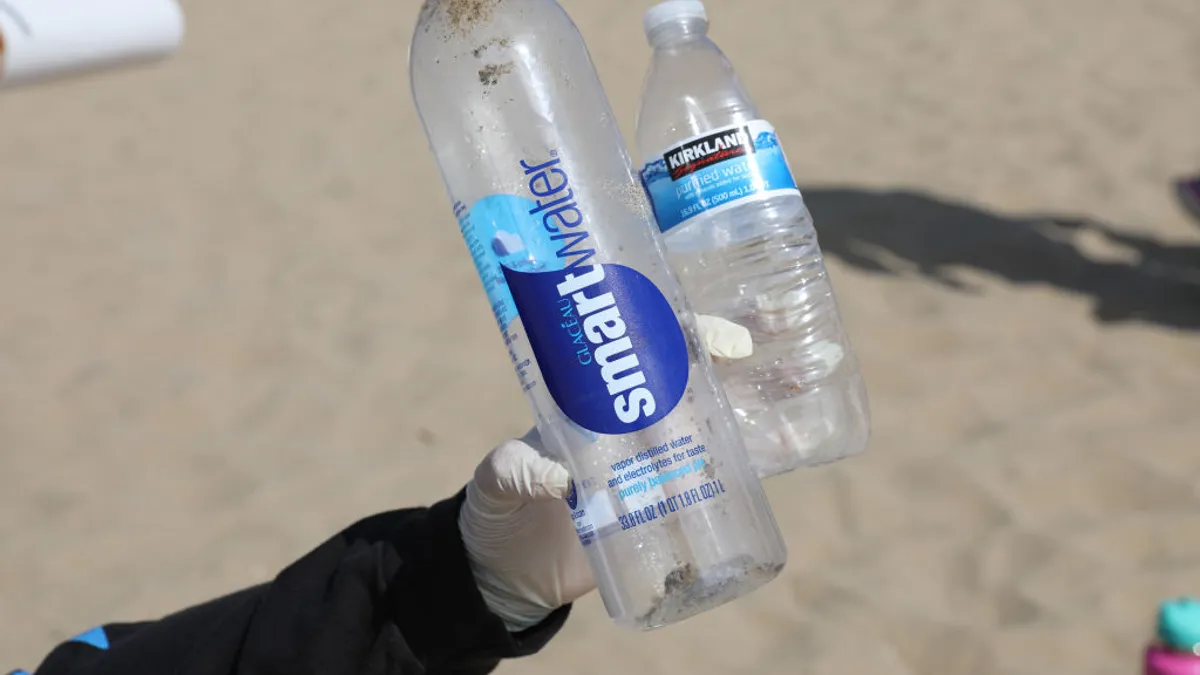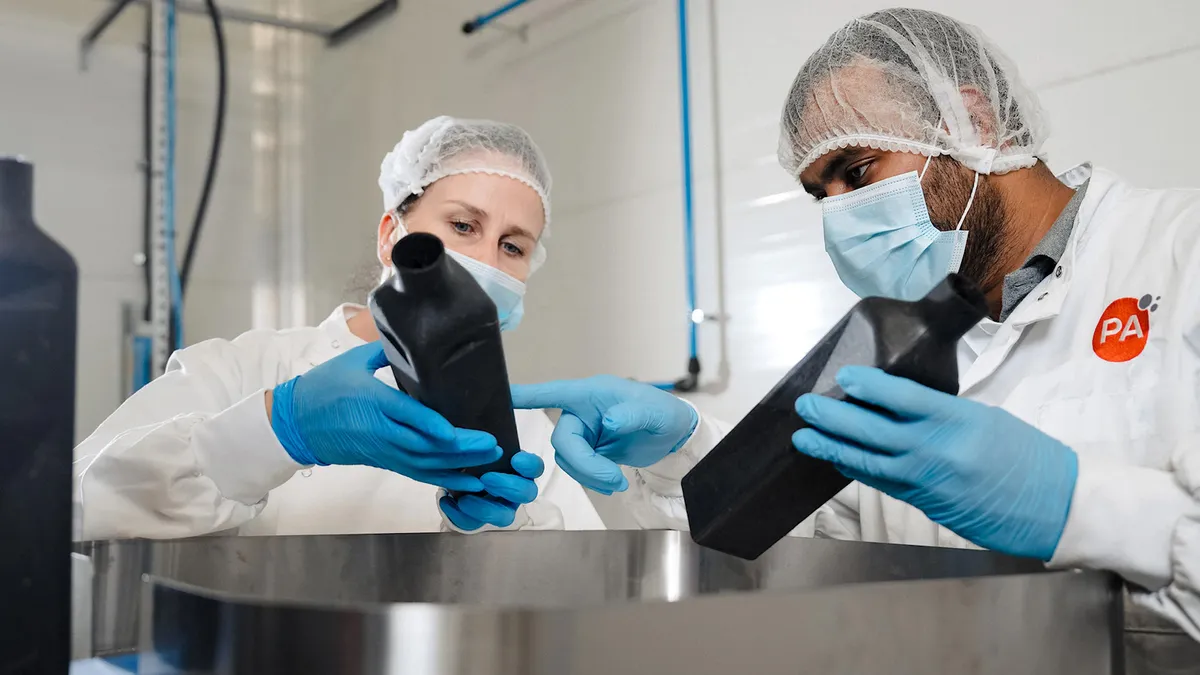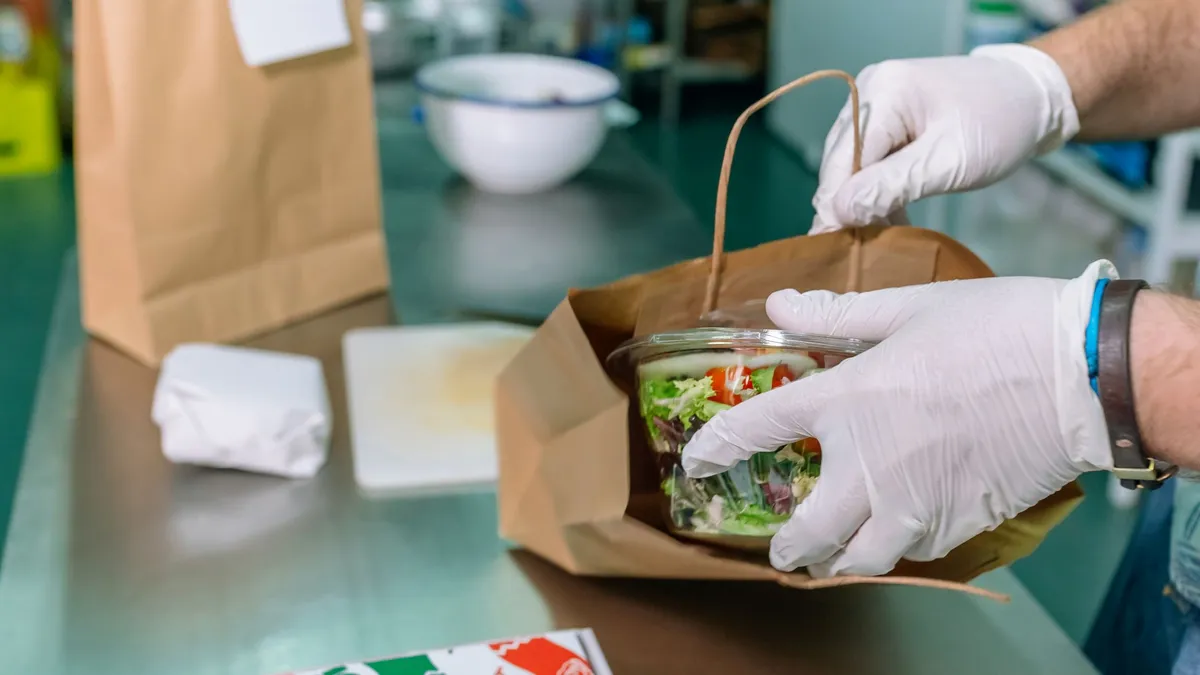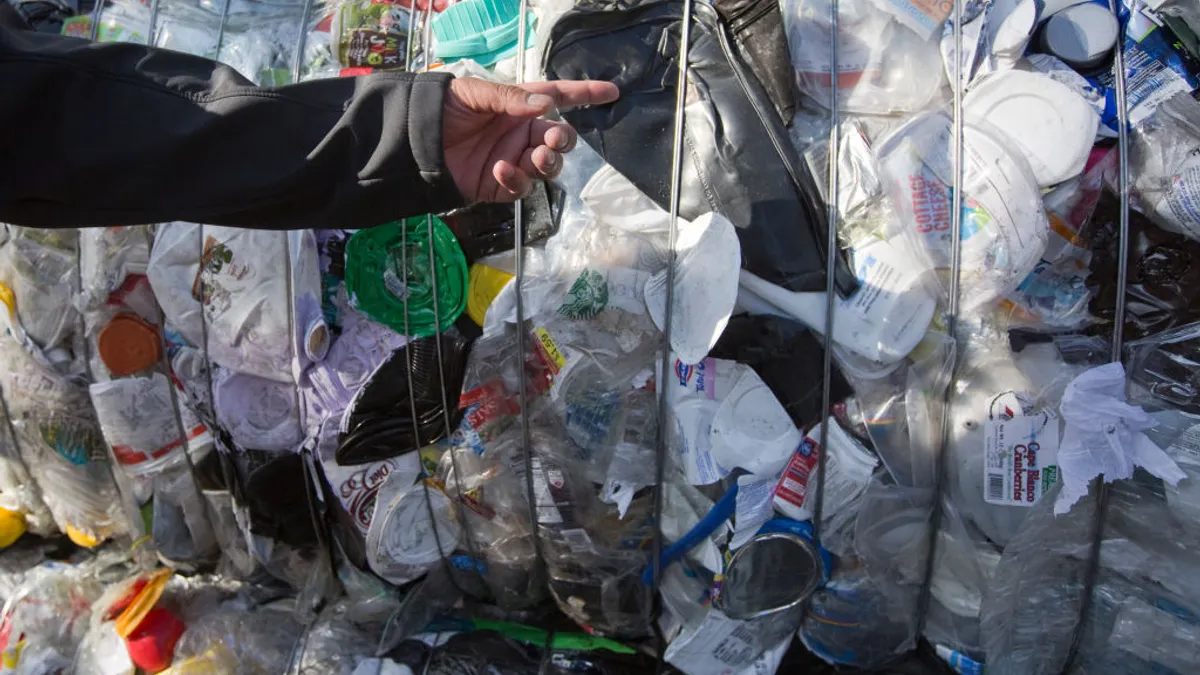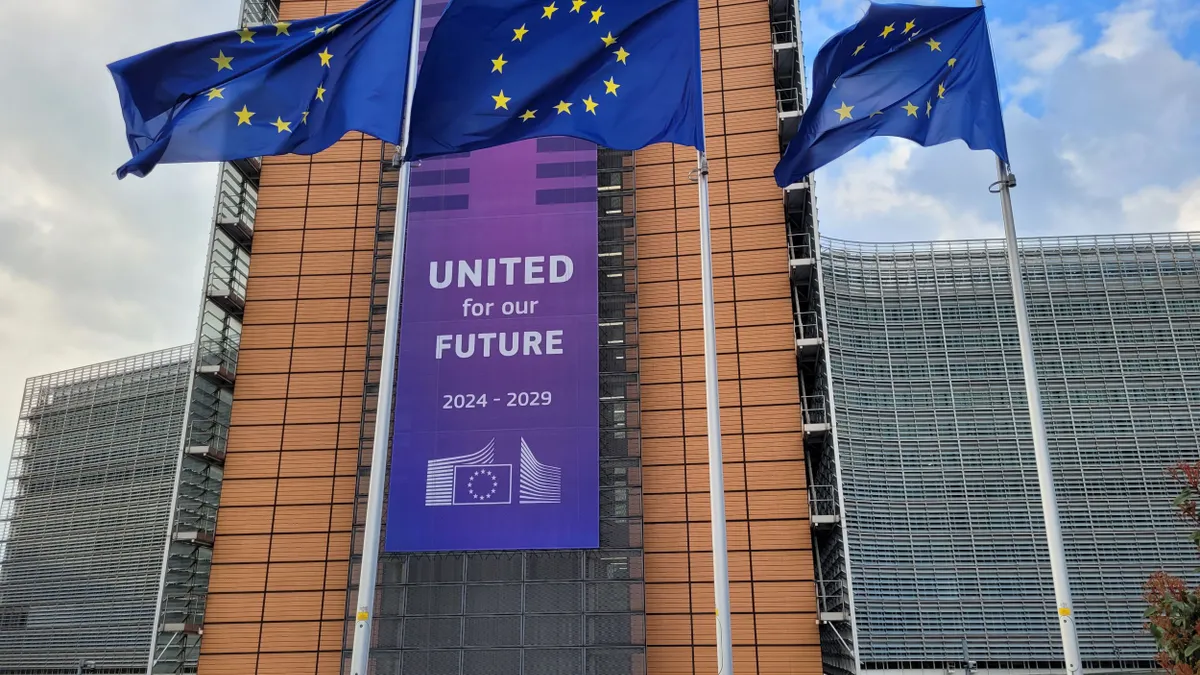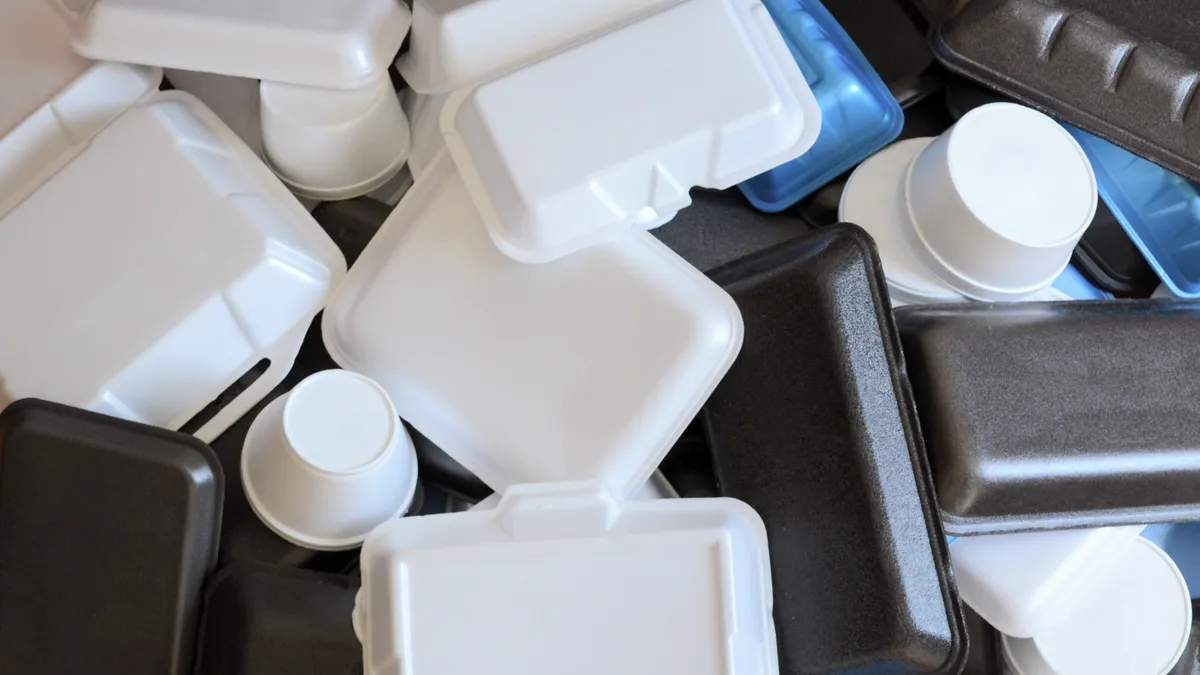Packaging groups have weighed in on the U.S. EPA’s Draft National Strategy to Prevent Plastic Pollution.
The Save Our Seas 2.0 Act directed that EPA create the strategy to reduce plastic waste and postconsumer materials in waterways and oceans. The draft released in April detailed objectives to reduce pollution during plastic production, improve post-use materials management and prevent trash and microplastics or nanoplastics from entering waterways. Through voluntary actions, EPA aims to eliminate the release of plastic waste from land-based sources into the environment by 2040.
The draft noted that containers and packaging — including single-use bags, wraps and bottles — comprise a large share of plastic products found in the U.S. municipal solid waste stream. EPA stated in the document that it was informed by engagement meetings in November 2021, naming packaging stakeholders including Ameripen, the Plastics Industry Association, Sustainable Packaging Coalition and the U.S. Plastics Pact.
EPA sought feedback on questions around whether specific types of plastic products be targeted for reduction or reuse; how processes beyond mechanical recycling could be considered “recycling activities;” the most impactful actions to address environmental justice, climate change, human health and environmental quality; and what role federal agencies and other collaborators should play.
The EPA docket indicates more than 91,000 comments were submitted by last week’s extended deadline, with hundreds posted including from companies, trade groups, nonprofits, state agencies and cities. Here are some of the perspectives shared by packaging groups:
Ameripen
Ameripen urged broader stakeholder engagement as EPA continues its work on the strategy.
The organization noted in its comment that while the strategy focuses on packaging, it seems to leave out other land-based sources of plastics that could enter the environment. Executive Director Dan Felton wrote that while Ameripen was listed as having helped inform the strategy, the group doesn’t recall formally engaging with the agency since discussion of the Solid Waste Infrastructure for Recycling Grant Program.
“We do not feel we were directly engaged in the development of the Strategy, and had we been, we would have recommended a different course of action than that proposed,” Felton wrote, also saying that composting, reuse, recycling and waste representatives appear to not have been included despite their relevance.
Ameripen outlined several areas for EPA to focus on going forward. Among them, Ameripen argued that EPA “lacks a comprehensive understanding of the challenges facing compostable packaging,” and encouraged EPA to convene stakeholders on the subject.
Ameripen pointed out the strategy’s emphasis on a need for improved labeling, plastics reduction or increased awareness of greenwashing. The organization reiterated its position that a patchwork of state and federal laws are challenging packaging providers that seek to educate and inform consumers. “Rather than seek to enforce or educate, we believe the area where the Agency could have the greatest impact is in helping to develop national definitions that inform labels, marketing claims and certifications,” Felton wrote.
Given the strategy’s focus on recycling, along with EPA’s past work on the issue, Ameripen calls for EPA to clarify the role of initiatives outlined in the plastic pollution prevention strategy versus other efforts, like the National Recycling Strategy — and, again, convene stakeholders.
Ameripen also stated that leveraging existing research and resources could save EPA resources.
Ameripen requested more information and clarity around issues not addressed in the draft, including consideration of packaging requirements for specialized food products, life cycle analyses for assessing packaging materials, assessing chemicals of concern in recycled content, and the potential intersection between extended producer responsibility and federal purchasing programs.
Flexible Packaging Association
The Flexible Packaging Association asserted that creating infrastructure for managing postconsumer materials, including recycling and education, should feature prominently in the strategy.
“Innovative approaches or tracks for post-consumer plastics materials management are not currently evident in EPA’s Plastics Strategy,” wrote Director of Regulatory Affairs Abigail Trumpy. “Instead, the general goals of the Plastic Strategy focus on reducing plastics manufacturing and banning plastics from a series of uses, including those for which substitutions may not exist.” FPA’s belief is that the draft is “inconsistent with EPA’s cited authority” in SOS 2.0, “which is limited to postconsumer materials management and infrastructure,” the organization wrote.
FPA laid out nine ideas for EPA to consider when working further on the draft, including not referring to plastics as “waste” and using the terms “single-use” and “unrecyclable” more judiciously, and prioritizing a national effort to bring consistency to state plastics labeling efforts.
NAPCOR
Weighing in on EPA’s proposed action to reduce the production and consumption of single-use, unrecyclable or frequently littered plastic products, the National Association for PET Container Resources responded with information about PET’s widespread acceptance in recycling programs.
Regarding a proposal to study the effectiveness of existing public policies and incentives on the reuse, collection, recycling and conservation of materials, the association stated its support for certain EPR programs and deposit return schemes that incentivize container recovery. A “well-designed” redemption system complementing single-stream recycling can provide “the highest quality and quantity of RPET,” NAPCOR stated in its comment.
Responding to EPA’s idea to facilitate more effective composting and degradation of certified compostable products, the organization spoke out against degradable additives in plastic packaging: “NAPCOR continues to maintain that the use of degradable additives in PET packaging not only jeopardizes PET recycling due to unknown potential consequences, but runs counter to the principles of sustainability and sound environmental stewardship, making it a poor end-of-life option.”
Reusable Packaging Association
The Reusable Packaging Association said that one of the most impactful actions proposed by EPA is the potential development or expansion of capacity to maximize material reuse. Among its benefits, the organization noted that recycled plastics can be incorporated into reusable products, increasing market demand. RPA sees the most important federal role as “improving the balance of federal research and grants offered for reuse and refill systems to at least match the levels offered for recycling practices.”
“Currently, federal policy is geared more to improving the linear economic model favoring single-use recycling rather than a circular one prioritizing reuse and refill systems, and this should change,” wrote President and CEO Tim Debus.
RPA urged the EPA to look beyond plastics, too. “[M]any initiatives outlined in the Draft National Strategy should be applicable to all material types in which a product’s single use leads to waste generation,” Debus wrote. “[T]aking a holistic approach to pollution prevention, encompassing all material types, would institute consistency in our waste management operations and strengthen behaviors and culture around source reduction, diverting products from waste streams, and resource conservation.”
Debus asserted that a national strategy for pollution prevention around just one material type “may fragment efforts and reduce overall effectiveness of an intended circular economy.”



